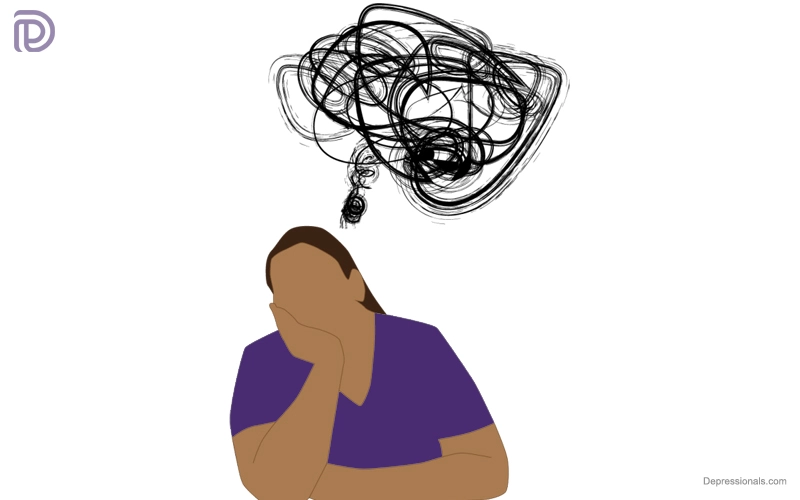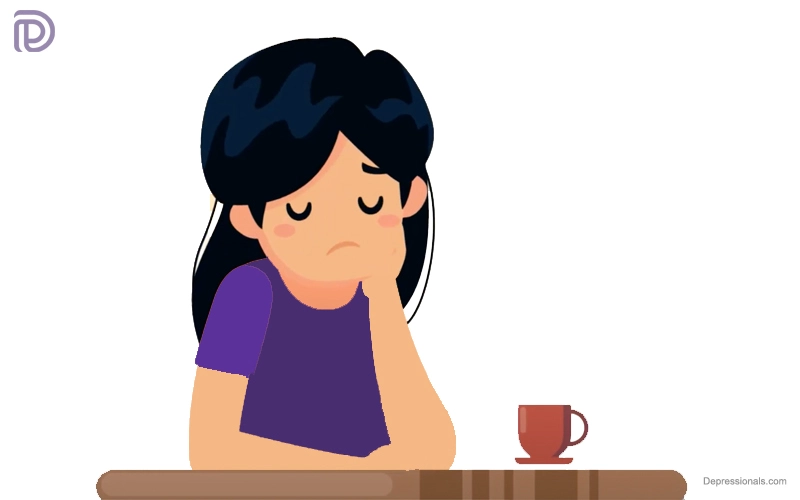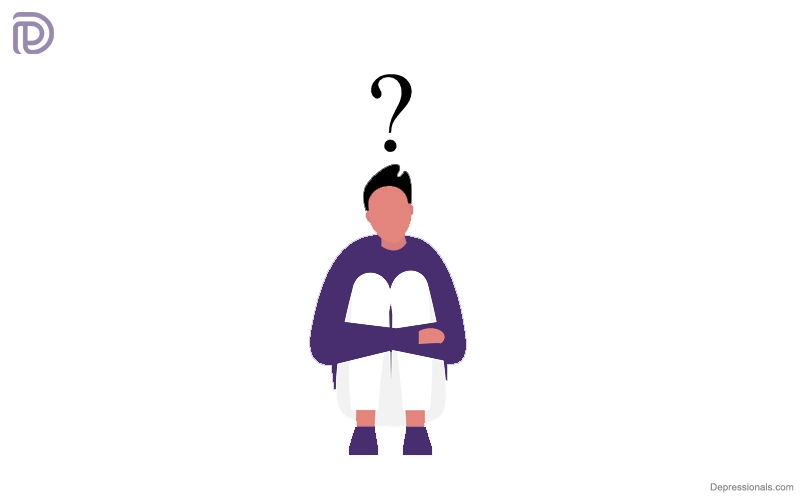What is formal thought disorder?
Thought Disorder causes difficulties expressing language because it leads to disorganized ways of thinking. Schizophrenia is associated with it, but it can also be a symptom of mania and depression.
Many people exhibit symptoms of thought disorders occasionally, making it difficult to diagnose and treat. When people are tired, they may experience thought disorders.
There are more than 20 types of thought disorders. We will discuss some of the most common types in this article. Furthermore, we will examine possible treatment options to assist you or a loved one in managing this disorder.
Read: Communication Disorders
Types and symptoms of thought process disorder
The first time thought disorder was recognized scientifically as a symptom of schizophrenia was in the 1980s. A loose definition of thought disorder would be any disturbance in the way ideas are organized and processed.
Thought disorders have unique symptoms. However, all types of disruption have an effect on the interconnectedness of ideas.
Although it’s common for some people to exhibit some of the symptoms of mental illness occasionally, people are not considered to have a mental illness until it negatively impacts their ability to communicate.
There are many types of thought disorders, including the following:
Alogia
Those who suffer from alogia, or poverty of speech, respond to questions in a brief, unelaborated manner. Those with this condition rarely speak without prompting. People with dementia or schizophrenia often suffer from this condition.
Blocking
Blocking is characterized by interrupting oneself in the middle of a thought. This might result in a brief or long pause. Once they resume talking, they often switch topics. People with schizophrenia often block their thoughts.
Circumstantiality
When speaking or writing, people with circumstantiality often include too many irrelevant details. Likewise, people with circumstantial thinking do the same. Their original point of view is kept, but lots of unnecessary details are provided before they return to the main point.
Read: What is Analysis Paralysis
Clanging or clang association
People with clanging thought processes choose words based on their sound rather than their meaning. Their sentences may not make sense because they use rhymes, alliterations and puns. Mental illness often causes a clattering thought process.
Derailment
A person who is derailing talks in chains consisting of only partially related ideas. Eventually, their ideas stray from the conversational topic. Someone with a derailment thought disorder might jump from talking about rabbits to talking about their hair to talking about your sweater.
Distractible speech
People with distractible speech have trouble focusing. They switch rapidly between topics and are easily distracted by both internal and external factors. People with manic episodes are more likely to do this.
Someone with distractible speech might ask you mid-sentence where you got your hat while sharing a recent vacation story.
Echolalia
People with echolalia have difficulty communicating. It is more common for them to repeat the noises and words they hear rather than express what they think. If they don’t know the answer to a question, they can repeat it.
Read: Suicidal Thoughts
Other types of thought disorder
There are 20 types of thought disorders listed in the Johns Hopkins Psychiatry Guide. Among them are:
- Paraphasic error: Mispronunciation of words on a regular basis.
- Stilted speech: The use of unusual and outdated language.
- Perseveration: This leads to repetition of thoughts and words.
- Loss of goal: An inability to stay on topic and to come to a conclusion.
- Neologism: Coming up with new words.
- Incoherence: The use of word salads, which appear to be random mash ups of words.
What causes thought disorders?
There is no known cause for thought disorders. People with schizophrenia and other mental health conditions often suffer from thought disorders, which aren’t symptoms of any particular disorder.
Similarly, the cause of schizophrenia is unknown, but genetic, biological, and environmental factors might play a part.
Since the symptoms of thought disorders vary widely and are loosely defined, it’s hard to pinpoint a single cause. Symptoms of thought disorders are still being debated by researchers.
The problem is thought to be caused by changes in brain regions related to language, while others think it is caused by problems in more general regions.
Read: Types of Overthinking
Risk factors of thought process disorder
Mental illness, such as schizophrenia and psychosis, is marked by thought disorders. If someone has: they have an increased risk of developing thought disorders.
- Mood disorders
- Bipolar disorder
- Depression
- Traumatic brain injury
- Anxiety
Researchers found that people with epilepsy are more likely to develop schizophrenia and psychosis than the general population in 2005.
You are more likely to develop schizophrenia after sustaining a traumatic brain injury, as well as depression and anxiety disorders.
There are several risk factors that may also be associated with schizophrenia, and therefore with thought disorder:
- Stress
- Substance abuse
- Inflammatory and autoimmune disease
- Early contact with toxic chemicals
Learn about: Subconscious Mind
When to see a doctor
Occasionally, people may experience symptoms of a thought disorder. If these symptoms occur frequently or are severe enough to impair communication, however, a doctor should be consulted.
Thought disorders are often symptoms of mental health problems. The symptoms of schizophrenia and many other mental disorders don’t improve without treatment. Mentally ill people don’t always realize their symptoms, which is why they need a family member or friend to help them.
You may want to suggest to someone you know to see a doctor if they have any other symptoms of schizophrenia:
- Delusions
- Hallucinations
- Disorganized speech or thinking
- Poor personal hygiene
- Lack of emotion
- Lack of facial expression
- Isolation
Seek help: Mental Help Resources
How to identify a thought disorder
It is the responsibility of a healthcare professional to diagnose thought disorders. Typically, people’s verbal responses are assessed after open-ended questions are asked.
Thought disorders can be assessed using several assessment tools, including:
Rorschach inkblot test
Hermann Rorschach invented the Rorschach inkblot test in 1921. Inkblot tests look for a possible thought disorder by looking at a series of ten inkblots.
The patient interprets each of the inkblots based on their interpretation of each. After interpreting the patient’s responses, the administering psychologist searches for possible mental health disorders.
Thought disorder index
The transcribed conversation is scored by a medical professional based on the thought disorder index after engaging a patient in a conversation.
The first standardized test to identify thought disorders is the Thought Disorder Index, also called the Delta Index. Each of the 23 potential thought disturbances is rated on a scale from zero to one in severity.
Scale for the assessment of Thought, Language and Communication (TLC)
An assessment is used widely to assess thought disorders. The process involves observing people and assigning severity ratings according to different definitions of thought disorders.
It is also possible for medical conditions to affect the ability to communicate verbally and in writing. The following are possible examples:
- Autism spectrum disorder
- Attention deficit hyperactivity disorder (ADHD)
- Endocrine disorders
- Hearing loss
- Infections
- Intellectual disabilities
- Metabolic disorders
- Substance use
- Traumatic brain injury
- Vitamin deficiencies
Prior to diagnosing a thought disorder, the doctor must rule out underlying medical conditions. The doctor will also examine the individual’s overall health and perform lab tests to determine if there are any other medical conditions in addition to evaluating their speech.
Stress and lack of sleep often cause abnormalities in language in everyday speech. According to Depressionals, the severity and frequency of symptoms should be taken into account when diagnosing depression.
An individual’s verbal response to a question can be used as a diagnostic tool for diagnosing a thought disorder. Additionally, medical providers should make sure that there are no other conditions that can cause similar speech problems.
Read: How to Stop Overthinking
Thought disorder treatment
The underlying medical condition is targeted in formal thought disorder treatment. Psychotherapy and medication are the primary treatment options.
Medication
A person with a thought disorder may be prescribed antipsychotic medication. Dopamine and serotonin are brain chemicals that can be balanced out with these drugs.
Psychotherapy
Psychotherapy helps people manage their illnesses and replace their unrealistic thoughts with realistic ones. Those with schizophrenia might benefit from cognitive behavior therapy, a type of psychotherapy, as well as cognitive enhancement therapy.
Please encourage your loved ones to seek medical attention if they suspect that they have a thought disorder. The right treatment method can be determined based on the underlying condition and the type of treatment that can effectively manage thought disorder symptoms.
Read: How to Overcome Analysis Paralysis
Takeaway
An unorganized way of thinking leads to unorthodox speech and writing. Communication can be difficult for people with thought disorders, and they may not realize that they have a problem.
It is a good idea to encourage anyone you know who may have a mental illness to make an appointment with a doctor as soon as possible.






Hi there, You’ve done a great job. I will certainly digg it and personally recommend to my friends. I’m sure they’ll be benefited from this website.
I have learned new things through your site. Thanks
you are really a good webmaster. The website loading speed is incredible. It seems that you are doing a unique trick. Furthermore, The contents are masterwork. you’ve done a great job on this topic!
Hey! Do you know if they make any plugins to assist with SEO? I’m trying to get my blog to rank for some targeted keywords but I’m not seeing very good results. If you know of any please share. Thank you!
Wonderful paintings! This is the type of information that are supposed to be shared across the net. Shame on the search engines for now not positioning this post upper! Come on over and consult with my web site . Thanks =)
Spot on with this write-up, I actually assume this web site wants much more consideration. I’ll most likely be again to learn rather more, thanks for that info.
I am continually looking online for articles that can benefit me. Thank you!
This site is known as a stroll-by for the entire info you wished about this and didn’t know who to ask. Glimpse here, and you’ll undoubtedly uncover it.
Hi! Someone in my Facebook group shared this website with us so I came to look it over. I’m definitely enjoying the information. I’m bookmarking and will be tweeting this to my followers! Fantastic blog and brilliant design.
My brother recommended I might like this website. He was entirely right. This post actually made my day. You cann’t imagine simply how much time I had spent for this info! Thanks!
I like what you guys are up too. Such clever work and reporting! Carry on the excellent works guys I?¦ve incorporated you guys to my blogroll. I think it’ll improve the value of my website 🙂
I like what you guys are up too. Such clever work and reporting! Keep up the excellent works guys I have incorporated you guys to my blogroll. I think it will improve the value of my website 🙂